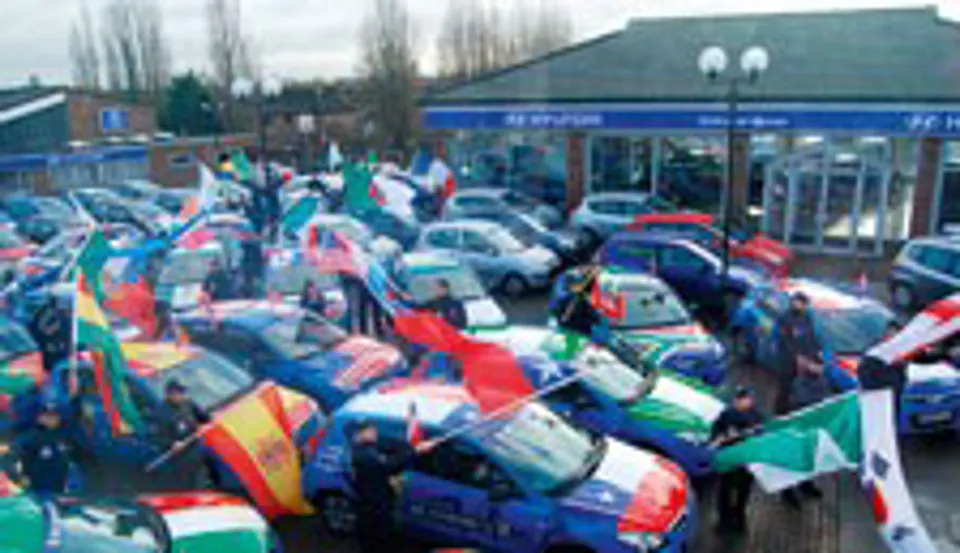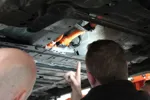The agony of the World Cup is something that will fade in time for most Brits. But for Hyundai, there is no such thing as a bad World Cup. Hyundai’s long-standing sponsorship of the event is its biggest single marketing cost and Hyundai brand awareness hits a peak across the world once every four years.
Now is the time the organisation is at its busiest as it brings in the harvest.
Allan Rushforth runs Hyundai Motor Europe as vice-president under a Korean principal.
He was in South Africa in June to watch his money being spent as one of FIFA’s six principal partners. Kia is a co-sponsor and gets a third of Hyundai’s spots.
“We decided 10 years ago to sponsor the World Cup and have now extended it to 2014. Football drives broadcast awareness of Hyundai and does that globally. We can measure the peaks of awareness occurring during the World Cup and the European competition which we also sponsor.
“The challenge is to sustain awareness and to manage the benefits that arise at the peaks. We still have only half of the awareness of Toyota.
“The next step is to better manage our image. That is something that we still have left to do. It is a much more challenging job. The people we are appealing to are cash rich, but time poor. We have to get them to listen to what we have to say.”
The strategy will be to raise the pre-mium credentials of the company. That process has already started with the interiors that have higher quality materials than is the norm for the price class, then making reliability clear with the seven-year warranty.
Next comes the equipment.
“Our objective is to make things like stop/start available to all and not just to those who are concerned and prepared to pay for it. There is no doubt the product will do the job. What we have to work at is carrying the message to the right people.”
One factor working for Hyundai is the performance of some of its compatriots.
“When I lived in Korea I had to furnish my own house and found that the quality of the stuff was not very good. Now we have LG and Samsung doing a very good job. That reflects well on other Korean majors such as us.”
Dealers are getting an upgrade and there will be a weeding out of back-sliders over the next three years.
Showroom interiors are changing across Europe and the new corporate identity will show up everywhere by the end of 2012.
Corporate identity will also change and there will be changes in business processes. The plan is that there will be fewer retail partners.
Those retained will all be capable of greater throughput and will likely run two or three sites rather than just one. There will be the same number of sites as now, but with fewer partners running a slightly smaller network.
Fantastic sum of money puts Hyundai in the front line
Hyundai is a bit shy about the cost of being one of FIFA’s six best buddies.
One thing is sure: it’s a fantastic sum of money. The fee to FIFA alone for the right to be an A-list partner is more than €1 billion.
That is just for the right to spend money on facilities and advertising. It buys nothing tangible other than the guarantee of eight minutes of air time for the Hyundai banners during each match.
In Germany, Hyundai spent an extra €7 million advertising and dealers contributed an additional budget.
FIFA partnership does confer some rights. Hyundai can use the World Cup logo, pictures of the trophy and the mascot and the names of the stadia in its advertising.
The contract is in two parts. Half has to be paid in cash. The other is in kind. In Hyundai’s case that means cars and buses. It sent 900 cars and provided thousands of “bus-days.”
Only Hyundai cars were allowed into the stadia. All celebrity news footage captured the Hyundai as the carriage of choice for the rich and famous.
What really tickles Hyundai is that it has secured first rights to the car contract when it rolls over to the next event. If there is a FIFA event in Germany for example, Hyundai gets to be the car provider, however much Mercedes might be prepared to pay.
Every Hyundai dealer in every country has been involved. In England, Hyundai advertised an invitation to visit the Hyundai dealer locally to pick up an England flag.
Hyundai makes the point that although it might be hitting above its ranking it is very profitable relative to the other global heavyweights. While Ford and GM have been posting massive losses, Hyundai Group (which includes Kia) has been banking a couple of billion euros of operating profit a year.
That comes off vehicle volume of 3.1m which ranks it fifth in the world behind Toyota, GM, VW and Ford. World market share is 5.2% which is double that of its share in Europe. What that tells Rushforth is that there is still plenty of scope to expand the European market. Plants in Czechoslovakia and Turkey are only just getting into their stride.
What has helped Hyundai in its volume expansion was being early into China, India and Russia. It was poised and ready when demand suddenly caught light there.
What the stats don’t immediately make clear is that for Hyundai and Kia, Korea is still a captive market and the source of a very high proportion of its profit.
What Hyundai now has to look out for though is the Chinese stealing its clothes in Europe. The Chinese proposition will be exactly that which got Hyundai and Kia started – quality small cars at heavily discounted prices.














Login to comment
Comments
No comments have been made yet.